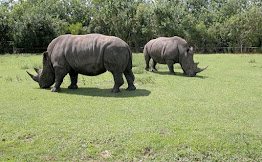ASSAM
 |
| District numbers of Assam |
Introduction
Assam covers an area of 30,285
sq mi (78,440 km2). The state is bordered by Bhutan and Arunachal Pradesh to
the north; Meghalaya, Tripura, Mizoram, and Bangladesh to the south; Nagaland
and Manipur to the east; and West Bengal to the west via the Siliguri Corridor,
a 22 kilometres strip of land which connects the state to the rest of India.
Location
Assam lies at the centre of
the seven states of North East India. The state primarily comprises of two
valleys the Brahmaputra and Barak named the dominant rivers.
Capital
Dispur is the capital of the
state of Assam. It is a locality of Guwahati and it became the capital of Assam
in 1973.
Languages
Assamese is the major language
spoken by the people of Assamese. Bodo is another important language. In the
Barak valley region, Bengali is spoken by the majority. Tribes like Dimasa,
Mishing, Karbi, Rabha, Tiwa, etc. speak their own dialects.
Climate
With the tropical monsoon
climate, Assam is temperate and experiences heavy rainfall and high humidity.
Some peculiar features of the climate of Assam are its mountain chills, valley
winds, sandstorms, fogs, cyclones etc.
 |
| Tea Leave |
The Flora
The vegetation of Assam is
primarily of tropical type covering areas of evergreen, semi-evergreen,
grassland, deciduous forests, grasslands and riverside forests. Much of the
state is covered with dense tropical forest of bamboo and at higher elevations,
evergreens. Many valuable trees like Sal, Agar, Gomari, Bon Chom etc., found in
these forests which help in economic development of the state.
The Fauna
Mostly the world famous One
Horned Rhinos are found in Assam. Some other popular animals are found in Assam-
Royal Bengal Tiger, Elephant, Pigmy Hog, Wild Buffalo, Hoolock Gibbon, Hispid
Hare, Gangetic Dolphin, Langur, Swamp Deer etc. Commonly found birds include
the White winged wood duck, Bengal Florican, etc.
 |
| World famous One-Horned Rhino |
Festivals
Assam is a place of festivals
as because here many tribes and schedules live under one roof. Here we just
mention only a few major celebration of Assam.
Bihu
The state festival of Assam is Bihu. It is of three types: Bohag Bihu or Rongali Bihu, Magh Bihu or Vhogali Bihu and Kati Bihu or Kongali Bihu.
 |
| Bihu dance |
Bohag Bihu is celebrated in
mid-April; the Magh Bihu is celebrated in mid-January and Kati Bihu is
celebrated in mid-October. All the Assamese community celebrates it
irrespective of caste, creed and religion.
Baishagu
Baishagu is the major festival of Bodo, the largest Scheduled tribe in Assam. They celebrate it with much pomp and gaiety in mid of April and at the same time the Assamese
 |
| Baishagu dance performance |
Rongker
It is celebrated among the
Karbis, the primary inhabitants of the Karbi Anglong district. Rongker is the
major springtime annual festival. The main reason for celebrating this festival
is to make the people free from the diseases and natural calamities throughout
the year.
Majuli Festival
The island of
 |
| Mukha Silpa, Majuli festival |
Elephant
Festival
It is an annual
 |
| Elephant festival |
Tea festival
Tea festival is
 |
| Tea festival |
Dehing Patkai
Festival
It derives its name from the
Patkai range and the Dehing River. This festival is celebrated in the month of
January and it is held at Lekhapani in Tinsukia district.
Karam Puja
It is the most
 |
| Karam Puja |
Dress
Assam is rich in culture and tradition. Its main dresses include Golden Silk Fiber or Muga Kapur. The traditional dress of the women is ‘Chadar Mekhela’ and the traditional dress of the men is ‘Dhuti Kurta’.
Bodo Tribe
Bodo ladies
 |
| Bodo traditional dance |
Dimasa Tribe
Both men
 |
| Traditional Dimasa dress |
Tai Phake Tribe
Chairchin is
 |
| Tai Phake girls in traditional dress |
Rabha Tribe
The traditional
 |
| Rabha girls traditional dance |
Mishing Tribe
Women of
 |
| Traditional Mishing dress |
Karbi Tribe
The men
 |
| Karbi man |
Khampti Tribe
The Khampti
 |
| Khampti people traditional dance |
Deori Tribe
Male use
 |
| Deori people |
Places to Visit
Assam is rich in natural
beauty and here we will discuss only about some few popular places for
visiting.
Kamakhya Temple
This Temple
 |
| Kamakhya Temple |
Sivasagar
It is formerly
 |
| Ranghar |
Majuli Island
This is the
 |
| A sunset pic of Majuli |
Kaziranga
National Park
It is situated
 |
| One horned rhino in Kaziranga National Park |
Manas National
Park
It is well
 |
| Manas National Park |
Hajo
It is an
 |
| Entrance of Madhab temple |
Agnigarh
It is a
 |
| Agnigarh |
Assam State Museum
It is also
 |
| Assam State Museum |
Comments
Post a Comment